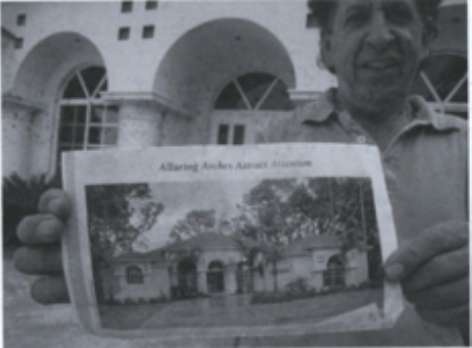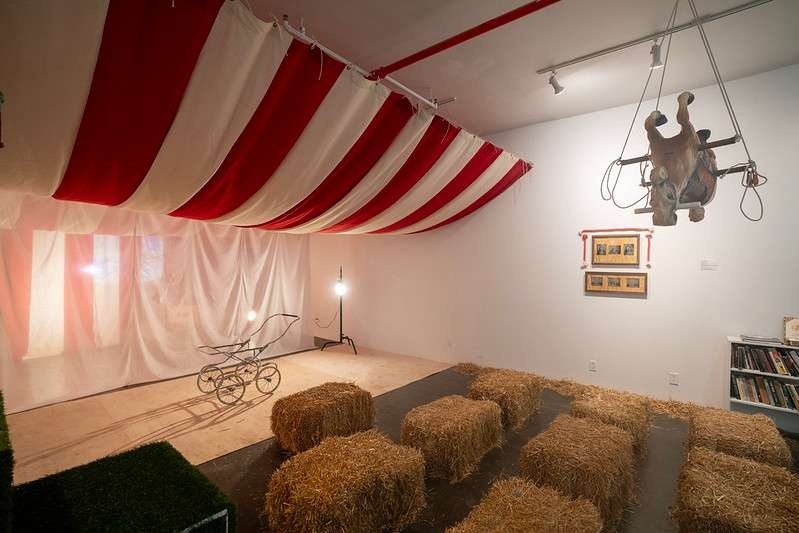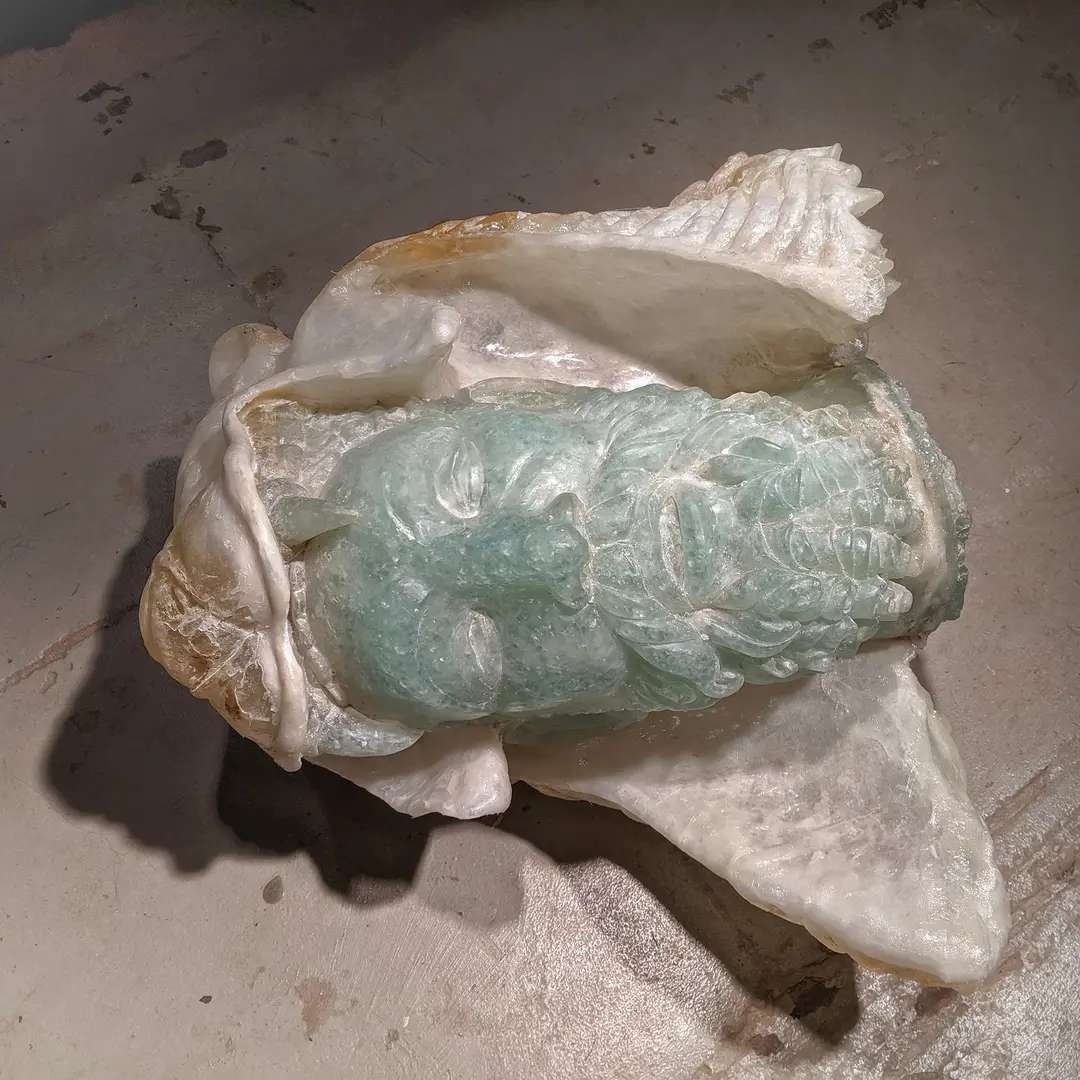“I love robbery and fraud,” Joanne the Scammer, instant meme and social media personality portrayed by the brilliant Branden Miller, famously declared. Scamming seems to have emerged in recent years as a captivating spectacle with multitudinous application. From the dating scene (catfishing) to business schemes (Fyre Festival), the scam takes us on an outrage-inducing journey from concealing to, inevitably, revealing. The greater the distance between duplicitous identities, between authentic and fake, the more delight and satisfaction can be felt, even when the scam (sometimes deliberately) fails. Success often hinges so simply on whether or not the goods are secured. But the term’s proliferation can deter us from concentrating on the societal implications of swindled capital and the reverberating effects of the heist. In minoritarian politics such as “scamming the patriarchy,” scams can be, à la Robin Hood, for the greater good. But what are the lines between stealing and reclamation, deception motivated by survival versus selfish spoil?
New York-based art collectives such as BUFU and the Yellow Jackets Collective have operated under the definition of scamming as undertaking the labor of redistributing resources in white supremacist systems to black and brown folks instead. Could this framework help us look differently at other modes of individual economic vigilantism to help us better understand the emotional and moral stakes in material gain? Lizania Cruz has created an intriguing body of work based on researching remittances, or small transfers of money sent by foreign workers back home, in her project $200 From… To… -With Love. As many sources identify, $200-300 are common amounts in which remittances are sent, and money transfer services reap a percentage of each transaction.[1] These painstakingly accumulated fragments of hard-earned wages, sent incrementally over months, years, and lifetimes, trouble traditional critiques of capitalism that simply dismiss aspirations for wealth. Unsurprisingly, many countries that receive the most remittances are former European colonies: India, Mexico, Nigeria, and the Philippines. In Haiti, remittances make up 32% of the nation’s GDP. Racist doctrine would have us believe that ethnic newcomers to white supremacist nations are the culprits for increasing criminality and thievery: wages and resources stolen from white American taxpayers. Instead, reframing remittances as scamming might help us see them as reparative gestures aimed at redressing the devastation wreaked by white supremacy and Manifest Destiny, also rebranded in the last century as the American Dream™.
In the exhibition’s largest component, Cruz collects receipts that track the daily purchases made by (mostly American) visitors to the space under $200, from lattes to laundry detergent. This wall of receipts, tracked loosely on a life-sized scatter plot, might make us feel guilty that the price of steamed milk and coffee could cover someone’s remittance transfer fee, often a small percentage of the total. Or, perhaps we are inclined to feel compassion toward our less privileged counterparts. [2] Cruz maps the potential loss of comfort in the day-to-day routines of those who donated receipts to her project, pointing out excesses and extravagances; essentially, what we might be forced to give up if we were in someone else’s shoes. From another perspective, perhaps no one is particularly lacking these bourgeois delicacies anyway.
Cruz also interviews immigrant workers who send remittances as a critical component of the exhibition. As with similar archival projects, such as Sarah Lynn Lopez’s The Remittance Landscape, remittance stories are permeated with endless tales of self-sacrifice. Do we interpret selflessness and hard work as inherent to the immigrant experience, or is it more likely that inexhaustibility is part of a melancholic drive to recuperate perceived losses and failures of non-whiteness? After all, the very root of the word “remit” refers to a debt or punishment that is cancelled or erased, which assumes that even deeply psychological wounds caused by racial inequality can ever truly be recovered.
Immigrant families’ emphases on the sheer quantity of remittances sent to them underscores the psychological motivations for material accumulation that circumscribe the circulation of monies between a metropole and its outlying lands. Lest we forget, this passionate exchange between brutal injury and delayed reimbursement, of which the responsibility often falls upon individual shoulders rather than governments or those with any real power, is a familiar lifecycle in American and world history. On a psychoanalytic level, scholars such as David Eng and Shinhee Han identified this condition as racial melancholia: if Sigmund Freud first defined melancholia as a dynamic process of loss and compensation, then in an American context, racial melancholia is unresolved grief resulting from being unable to attain an idealized whiteness.[3]
The “alluring arches” of the house in this photograph captured the attention of Sergio Robles, who attempted to build an exact replica of the house, down to the landscape plantings, rendering the form of the wood-frame original in brick and concrete. Photograph by Sarah Lynn Lopez.


The “alluring arches” of the house in this photograph captured the attention of Sergio Robles, who attempted to build an exact replica of the house, down to the landscape plantings, rendering the form of the wood-frame original in brick and concrete.
Photograph by Sarah Lynn Lopez.
There is perhaps no better visual for racial melancholia at work than remittance architecture — or structures funded by remittances — pictures of which Cruz has pinned to the walls. At best, remittances create public spaces to benefit entire communities (basketball courts, town plazas, and cultural centers). At worst, they result in mansions for the nouveau riche. However, we would be remiss to not account for the style in which these dreams develop, for we would overlook the alluring alchemy that turns ambitions into strange, hybrid aesthetics. In many instances, remittances houses echo the style of the foreign country that dispenses the remittance, like apparition of American suburbia displaced from the United States. While their façades are faithful imitations of images culled from magazines, photographs, and real estate ads, their interiors are often completely different. In Mexico for example, Sergio Robles built an exact replica of a Miami house design from a mail-order catalogue.[4] However, omitted from Robles’s copy is the original’s attic floor. He also reformulated the walls of each room. A walk-in safe in his master bathroom houses his valuables. This sprawling estate stands completely empty eleven months out of the year, while Robles lives and works in the United States.
Is this mimicry a forgery or does it reveal the American Dream as fake, hollow, and misguided—made more apparent to us once whiteness is not at its center? (As Joanne the Scammer would observe, “Just like a Caucasian!”) One cannot deny that a creeping amusement can be derived from finding the presence of white American culture, already distilled and diluted from European colonialism, as decorative, ornamental, and artificial rather than the privileged status of full-fleshed human that whiteness has always enjoyed. Once-practical wood siding and triangular gable roofs are often traced into mere shadows of their original; structural supports become evocative flat reliefs pressed into concrete or stucco. These are the ghosts of white life and happiness promised by asphalt kingdoms with perfectly pruned green lawns, calcified into empty shells that stand oddly out of place next to centuries-old peso homes.
This ghostliness draws us back to Eng and Han’s elucidation of racial melancholia: “the melancholic assumes the emptiness of the lost object or ideal, identifies with its emptiness, and thus participates in his or her self-denigration and ruination of self-esteem.”[5] Is that why so many immigrants who send remittances back home, even the most financially successful, become so insatiable with their spending? Young laborers, upon expressing extreme dissatisfaction with their first remittance home, immediately begin constructing a second one. Children build state-of-the-art kitchens for their mothers, who much prefer the older, familiar layout. Immigrant couples invest in a future life thousands of miles away while living in poor ramshackle conditions for decades. Violent processes, involving risky journeys across borders and separation from loved ones, transform into beautiful gleaming surfaces. Enviousness propagates entire domestic industries for new foreign materials such as fired brick and wrought iron to achieve the colonial “look.”
How can someone invest so much in a life that is, quantitatively, a very small fragment of their total time lived? It is difficult not to compare these “eventual homes,” or unoccupied spaces swollen with anticipated life, to tombs: necropolises that the living lovingly prepare to eventually occupy. Nowadays, it is not only that the idea of afterlife has dimmed into fiction, or that we can no longer afford a lavish afterlife during economic decline. Rather, the real scam of global capitalism is convincing us that transplanting post-life excess to our time alive now will improve the quality of the life lived. Meanwhile, most would neglect to account for how these aspirations also bring the object-like rigidity of death a little closer. If the precarious separation between scammer and criminal, karma versus crime, boils down to the degree to which the deed merits punishment, it’s not so easy seeing who exactly is the one being duped.
Footnotes
-
Billions in Motion: Latino Immigrants, Remittances and Banking, 2002. Pew Hispanic Center, Washington, DC.
-
See Lauren Berlant’s “Compassion: The Culture and Politics of an Emotion” (London: Routledge, 2004) for an extended conversation on the limits of compassion and empathy.
-
David L. Eng and Shinhee Han. “A Dialogue on Racial Melancholia.” Psychoanalytic Dialogues, 10(4): 2000, p. 672. See also Anne Anlin Cheng’s Melancholy of Race (Oxford University Press, 2000).
-
Sarah Lynn Lopez, The Remittance Landscape: Spaces of Migration in Rural Mexico and Urban USA (Chicago: University of Chicago Press, 2015), 65.
-
Eng and Han, 672.
About the artist
Explore/Archive
See allOctober 2025
streamlined reflections, courtesy of noise canceling headphones
Gabrielle Rucker
Gabrielle Rucker reflects on the radical intimacy and auditory life at the heart of Deli Radio
July 2025
Tell My Jockey: CUNTRY’s Discourse From the Horse’s Mouth
Ericka Pérez
Assembly fellow Ericka Pérez reflects on clowning, resistance, and CUNTRY’s radical refusal to perform.
April 2025
The Second Head of Hercules: Art and Resistance Through Four Years of Upheaval
Shakeem Floyd
written in conjunction with artist Onyedike Chuke's Session x Assembly project, The Forever Museum Archive: Circa 2020_An Object





